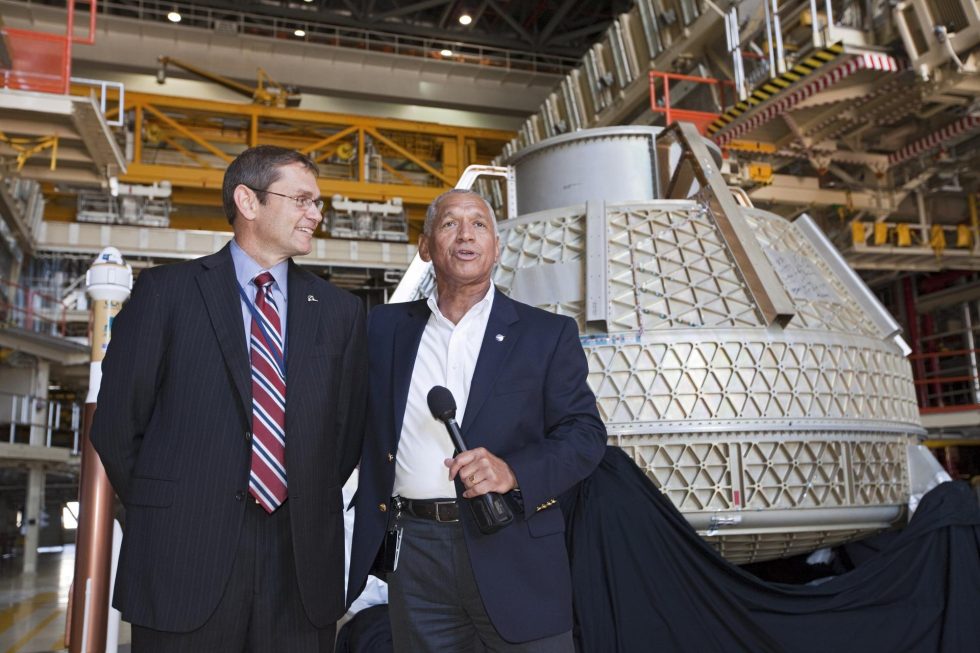Nearly five years ago, NASA faced a difficult decision. The agency had spent about $1.5 billion to help Boeing, SpaceX, and Sierra Nevada Corporation design spacecraft that could carry US astronauts to the International Space Station. As it sought to build flight hardware, NASA prepared to select just two providers to move forward—both to generate a healthy competition and provide redundant access to space.
NASA had a total of $7 billion to distribute to the winning companies to finalize development of their spacecraft, integrate their rockets, and each fly up to six missions after NASA certified the vehicles as space-worthy.
Publicly, some Boeing officials were denigrating SpaceX, emphasizing their own blue-blooded legacy. Boeing has had a successful working relationship with NASA dating back to 1961 and the first stage of the Saturn V rocket. By contrast, Boeing would note, Elon Musk seemed more interested in flashy marketing and never met his launch targets. "We go for substance," John Elbon, head of Boeing's space division, said at the time. "Not pizzazz."
Behind the scenes, Boeing was pushing hard to win all of the funding for NASA's commercial crew program, and the company was encouraging NASA to go with the safe choice over spaceflight newcomers SpaceX and Sierra Nevada. "We were fighting to keep two providers as many in Congress, lobbyists, and some in NASA were fighting to down-select to only Boeing," one government source familiar with the process told Ars.
In the end, NASA's chief of human spaceflight, William Gerstenmaier, kept two providers, Boeing and SpaceX. This has proven a wise decision for reasons of both cost and schedule. It also offers a timely lesson as NASA administrator Jim Bridenstine considers new approaches to taking humans back to the Moon with a reasonable budget and schedule.
Cost disparity
In terms of cost, NASA is getting a better deal from SpaceX. Perhaps the best way to determine costs is by "seat prices," the amount of money NASA pays to get one of its astronauts to the International Space Station. In recent years, since the retirement of the space shuttle in 2011, NASA has paid Russia as much as $81.8 million per seat.
NASA has rarely talked "seat price" for commercial crew. Really, it has only come up during Congressional hearings, when Gerstenmaier has quoted a figure of $58 million. "Assuming all 12 missions are purchased and flown at a rate of two per year, the average seat price is $58 million per seat for commercial crew," he testified in 2015.

However, this number does not reflect what NASA is paying Boeing and SpaceX individually. According to the US Government Accountability Office, there are three main funding lines in the commercial crew agreement: line item 001 is for development and testing, line item 002 is for service missions, and line item 003 is for special tests, studies, and analyses. To determine the per-seat price, we need to know the value of line item 002 and then divide by the number of seats per flight (four) and flights (up to six).
Neither the agency nor the companies have publicly disclosed the values for line item 001 or line item 002. But we can make a pretty good estimate. By subtracting line item 003 (up to $150 million for each company), knowing the total value of the contracts, and using NASA's own average value of $58 million "seat price," we can back into the total value of line item 002: $2.784 billion. This, then, is the total amount NASA is paying for 12 operational flights to the space station from 2020 to 2024, or a total of 48 seats from both companies.
Now, for the final step: overall, NASA awarded Boeing $4.2 billion for its commercial crew contract and SpaceX $2.6 billion. If this proportion of funding holds for line item 002, which a NASA source indicated is more or less accurate, then the seat prices NASA is paying Boeing and SpaceX are substantially different. According to this analysis, NASA will pay Boeing about $71.6 million per Starliner seat and SpaceX $44.4 million per Dragon seat.
Why is NASA paying Boeing so much more? Probably because the company asked for it. As part of this competition, SpaceX bid a low price because it believed the space agency would prioritize lower prices. “Knowing I could have bid more, after the fact, I sure wish I would have bid more,” Gwynne Shotwell, president of SpaceX, said about this price disparity in 2018. Essentially, competition drove SpaceX to offer a lower price.
Schedule
Despite receiving less money from NASA and having less spaceflight experience, it now seems likely SpaceX will deliver a crew capability sooner. The California-based company has already flown its demonstration mission for NASA a month ago, and it is now working toward final tesRead More – Source
[contf] [contfnew] 
Ars Technica
[contfnewc] [contfnewc]







